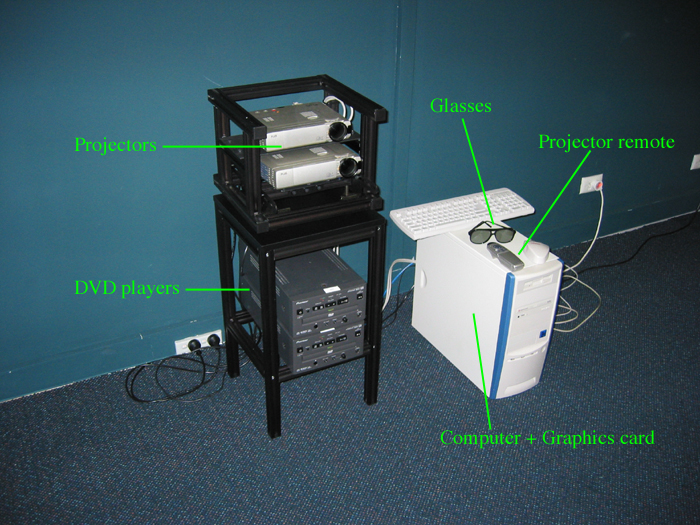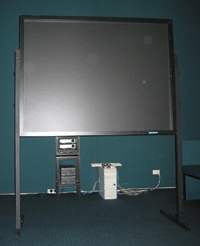Projectors These are two consumer grade DLP projectors. Since space is always an issue with rear projection the model chosen supported a short throw lens option. A rigid metal rig supports the two projectors removing the need for any re-alignment between installations. The top projector is essentially rigid while the bottom projector can be positioned/aligned with total control. In front of each projector lens is a linear polarising filter on an adjustable thread, the filters can be rotated to match their orientation to that of the glasses. 
These are two professional grade players, the key requirement is their ability to be started together on a contact closure and remain in synchrony over the length of the movie. These DVD players can be started together with a contact closure using software on the computer inconjunction with a custom built serial splitter. GlassesThere are a number of suppliers of linear polarising glasses for stereoscopic projection applications. They range in price from cheap cardboard varieties to "professional" plastic, the later pere chosen for this project since large numbers weren't involved. The better glasses do sit more comfortably especially over existing glasses. Computer and OpenGL cardA standard Intel processor based machine running Linux was used with a dual display OpenGL accelerated graphics card. The two DVI outputs from this card are converted to VGA and cabled to each projector. The left hand side of the 2048x768 pixel region goes to one projector and therefore one eye, the other half goes to the other projector and the other eye. Note that 2048x768 is used as 1024x768 is the native resolution of the projectors, using the native resolution gives the best quality image. The only other slightly special feature was a raided disk to support 30fps playback of digital movies. | ||||
